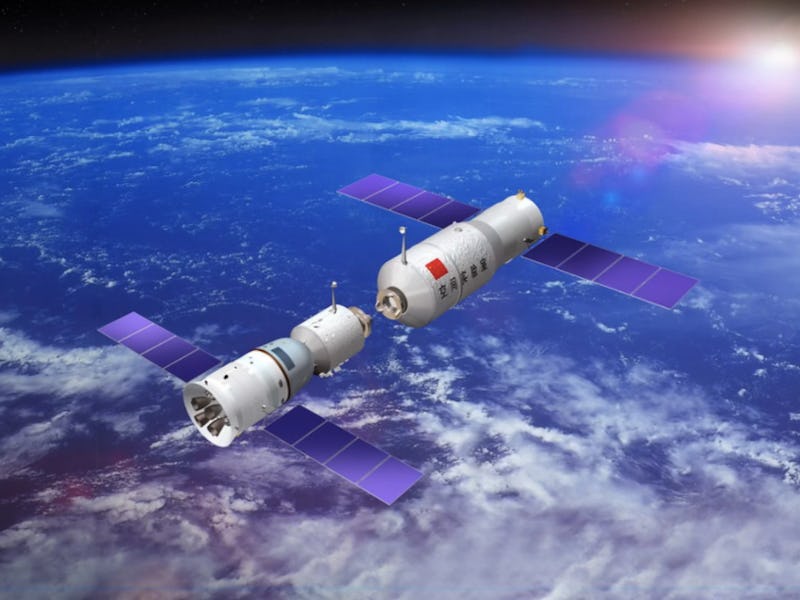This Chinese Space Lab is About to Crash Down to Earth

Well, 2018 is finally here, and what better what better way to ring in the new year than waiting for a 19,000 lb space station to fall to Earth?
According to a not-for-profit organization called the Aerospace Corporation, China’s first space lab, called Tiangong-1, will reenter Earth’s atmosphere sometime in March. The station launched on board a Long March 2F/G rocket back in 2011 with the intent to only remain active for two years, but officials later extended the life span of the space lab’s mission for a few more years in order to conduct more research on board.
It’s not uncommon for spacecraft and satellites to reenter Earth’s atmosphere, so there’s no need to panic. Besides, statistically speaking, you’re almost definitely not going to get hit by a space station, or even a small piece of it. That said, at this point, it’s pretty much impossible to predict where or when it’ll land, as this is not a controlled reentry.
“It is a well known scientific principle that any measurement or prediction will always have an associated uncertainty,” The Aerospace Corporation notes on its website. “In the case of most reentering objects, the uncertainty associated with predicting reentry location is extremely large and precludes an accurate location prediction until shortly before the reentry has occurred…Based on Tiangong-1’s inclination, however, we can confidently say that this object will reenter somewhere between 43° North and 43° South latitudes.”
Image Credit: China Manned Space Engineering Office
Tiangong-1, nicknamed the “Heavenly Palace,” has previously been hailed as a symbol of China’s efforts to become a major force in space. But over the last few years, Tiangong-1 has been on a somewhat tumultuous course — in 2016, mission officials announced the space lab had “comprehensively fulfilled its historical mission” and would likely reenter earth’s atmosphere in the latter part of 2017. Some astronomers took that as a sign that China had lost control of the lab and that it’d reenter Earth’s atmosphere…eventually.
“You really can’t steer these things,” Harvard astrophysicist Jonathan McDowell told The Guardian back in 2016. “Even a couple of days before it re-enters we probably won’t know better than six or seven hours, plus or minus, when it’s going to come down. Not knowing when it’s going to come down translates as not knowing where its going to come down.”
For those of us here on Earth who’d rather not get hit with shrapnel from a falling space station, there’s some good news: it’s extremely unlikely that someone will get hit by the space lab. Plus, much of the space station won’t actually make it to Earth, as a portion of it will burn up in our atmosphere.
But if someone picks up potentially dangerous material from the fallen object, that could be bad.
“Potentially, there may be a highly toxic and corrosive substance called hydrazine on board the spacecraft that could survive reentry,” The Aerospace Corporation writes. “For your safety, do not touch any debris you may find on the ground nor inhale vapors it may emit.”
Basically, look out for unusual flying objects, and if you see a giant hunk of metal fall to Earth, DON’T TOUCH IT.